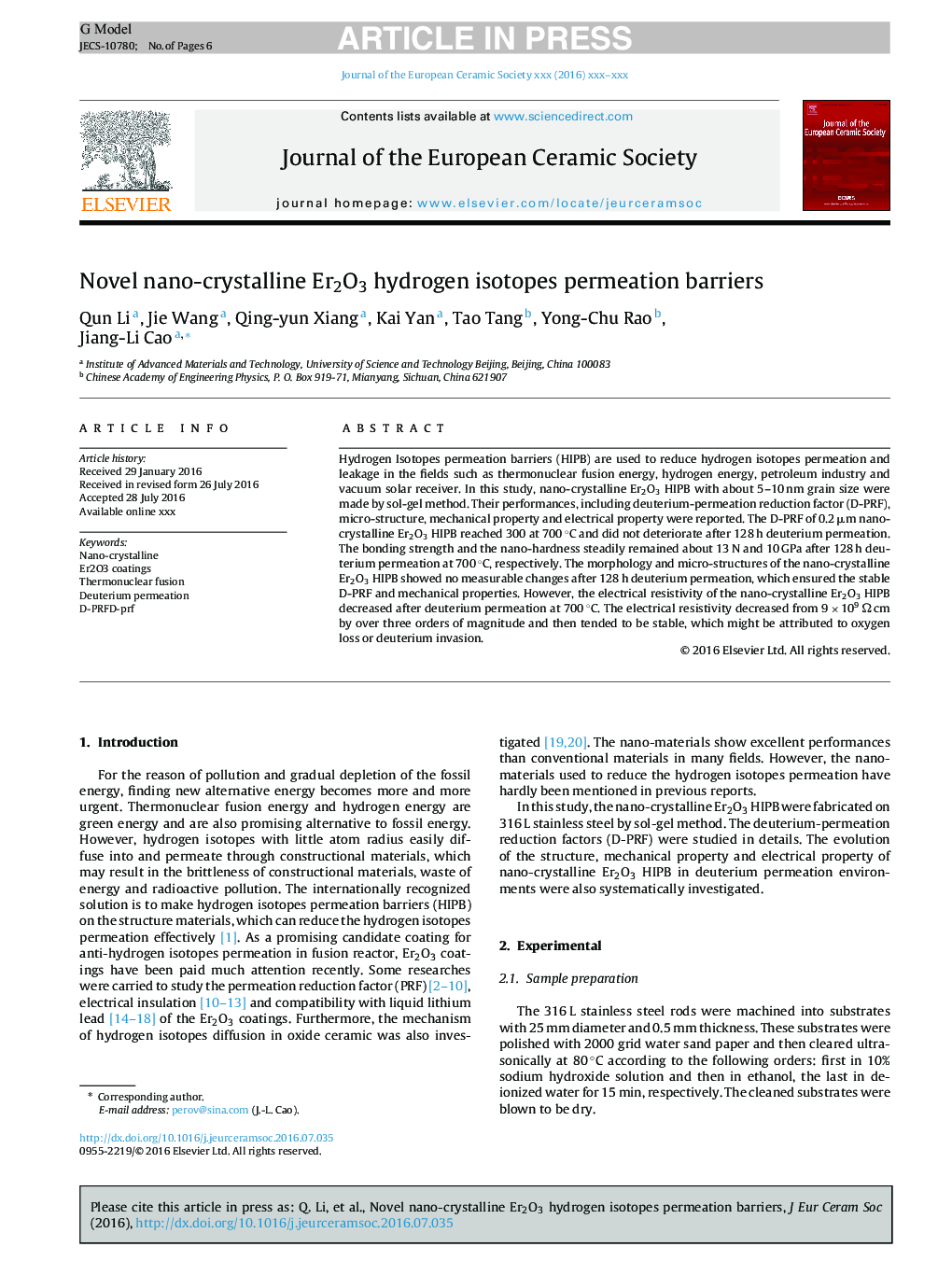| Article ID | Journal | Published Year | Pages | File Type |
|---|---|---|---|---|
| 5440866 | Journal of the European Ceramic Society | 2017 | 6 Pages |
Abstract
Hydrogen Isotopes permeation barriers (HIPB) are used to reduce hydrogen isotopes permeation and leakage in the fields such as thermonuclear fusion energy, hydrogen energy, petroleum industry and vacuum solar receiver. In this study, nano-crystalline Er2O3 HIPB with about 5-10 nm grain size were made by sol-gel method. Their performances, including deuterium-permeation reduction factor (D-PRF), micro-structure, mechanical property and electrical property were reported. The D-PRF of 0.2 μm nano-crystalline Er2O3 HIPB reached 300 at 700 °C and did not deteriorate after 128 h deuterium permeation. The bonding strength and the nano-hardness steadily remained about 13 N and 10 GPa after 128 h deuterium permeation at 700 °C, respectively. The morphology and micro-structures of the nano-crystalline Er2O3 HIPB showed no measurable changes after 128 h deuterium permeation, which ensured the stable D-PRF and mechanical properties. However, the electrical resistivity of the nano-crystalline Er2O3 HIPB decreased after deuterium permeation at 700 °C. The electrical resistivity decreased from 9 Ã 109 Ω cm by over three orders of magnitude and then tended to be stable, which might be attributed to oxygen loss or deuterium invasion.
Related Topics
Physical Sciences and Engineering
Materials Science
Ceramics and Composites
Authors
Qun Li, Jie Wang, Qing-yun Xiang, Kai Yan, Tao Tang, Yong-Chu Rao, Jiang-Li Cao,
